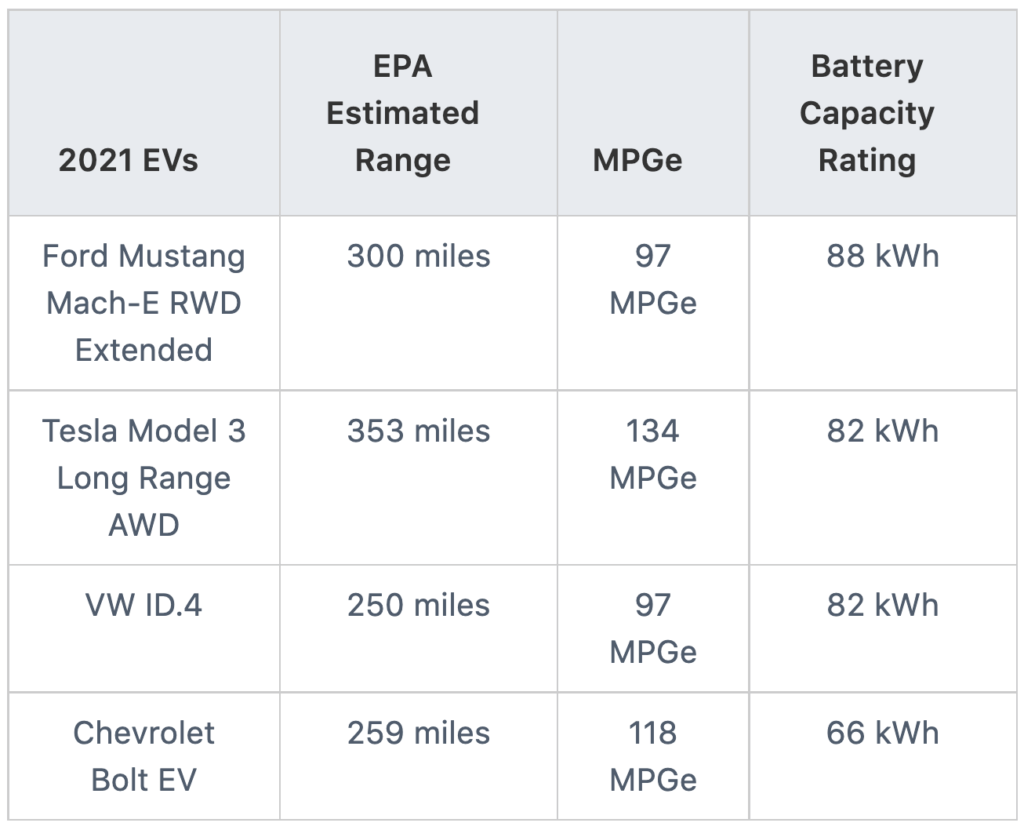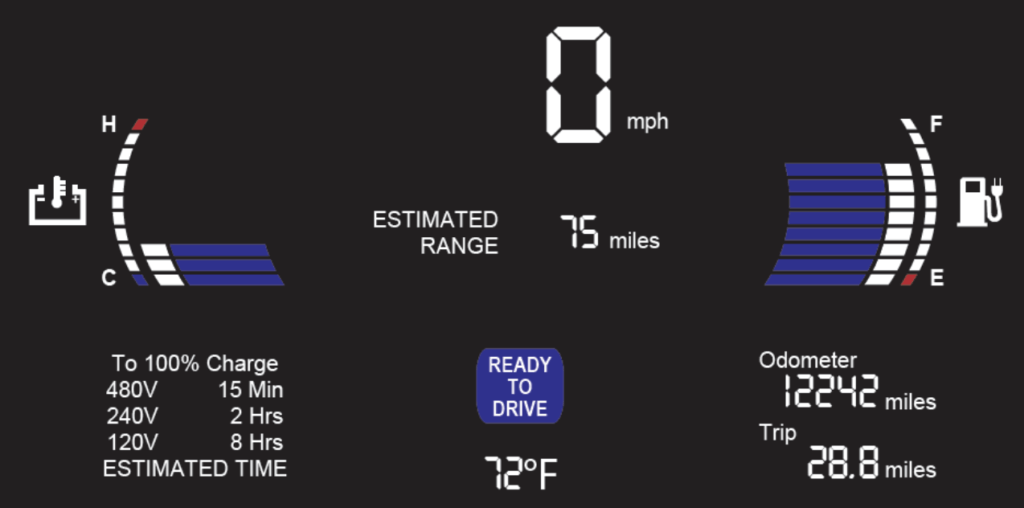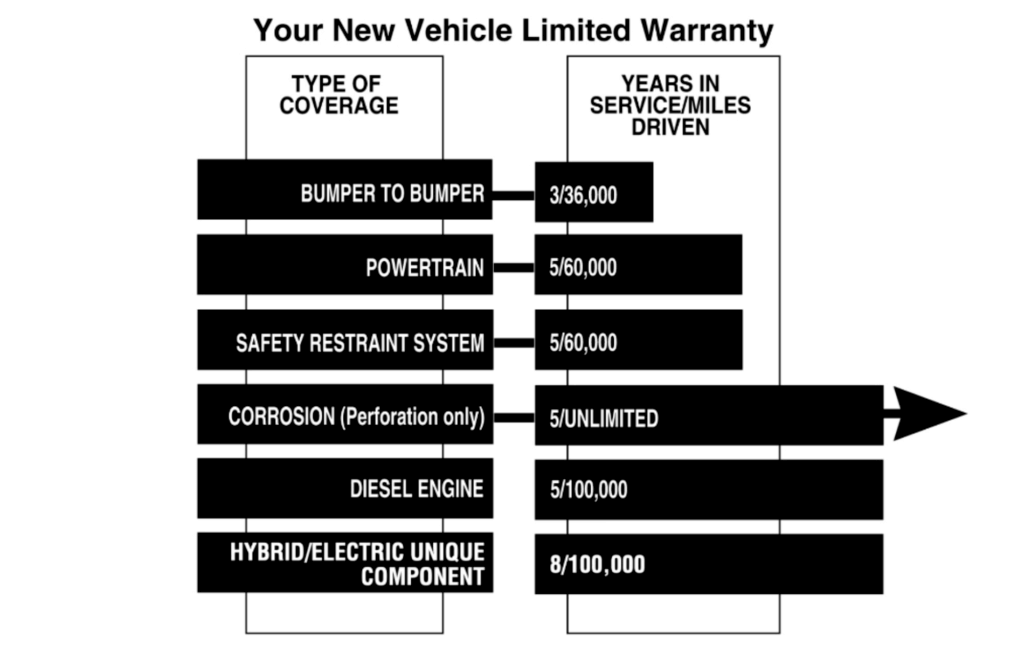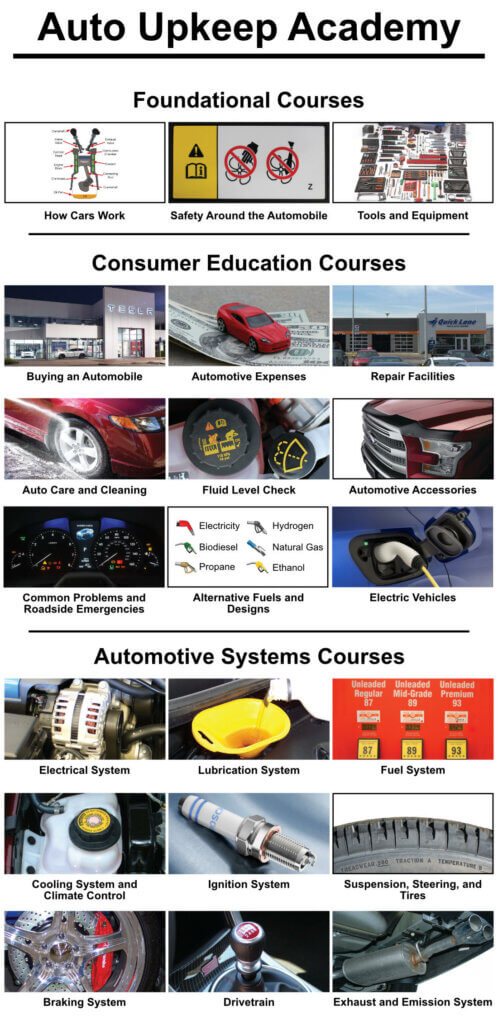An EV battery is also called a traction battery or traction battery pack. Unlike a standard 12 volt starting, lighting, and ignition (SLI) battery, an EV high voltage traction battery is designed to convert the chemical energy stored in the battery to electricity to power the electric motors that propel the vehicle. Some EVs have a traction battery and a 12-volt SLI battery. Other EVs have totally eliminated the 12-volt SLI battery. An SLI battery is usually lead-acid. Most EV traction batteries are lithium-ion (Li-ion). Small lithium-ion batteries are used in laptops, tablets, and cell phones. A lithium-ion battery has a high energy density.
Capacity
The EV traction battery capacity is rated in kilowatt-hours (kWh). For a comparison on how much energy is in a kWh, a standard 100 watt light bulb uses 0.1 kilowatts each hour. After 10 hours being left on, that light bulb would have consumed 1 kilowatt. The larger the kWh number rating on the battery pack the more energy the battery holds. The battery capacity, along with the vehicle’s design, weight, and aerodynamics, plays a significant role in the vehicle’s range.

Cells, Modules, and Pack
An EV traction battery, also known as a battery pack, is composed of battery cells and modules. The basic unit of an EV traction battery is the battery cell. The battery cell is what holds the chemical energy. When a number of cells are grouped together a module is created. Finally, when multiple modules are put together with the battery management system and the battery cooling system, a battery pack is formed. EV traction batteries have numerous battery cells to make up the high voltage battery pack. For example, the 2021 Mustang Mach-E Extended Range 88 kWh battery pack has 376 lithium-ion cells packaged in 12 battery modules.
Range
Range in an EV is greatly affected by driving style, cabin climate control, speed, cargo weight, and road topography. The dash on an EV may show estimated remaining drive range and the time to 100% charge based on a 120V (Level 1), 240V (Level 2), or 480V (DC Fast Charging) power source.

Degradation
EV battery packs are very durable. However, they do degrade over time. Some EV traction batteries may lose between 1 to 2% of their range per year. This really depends on how the battery has been charged. Recommendations to extend the EV traction battery life include the following:
- Avoid extreme temperatures. EV batteries are most efficient at about 68 degrees F.
- Do not to overcharge the battery.
- Keep the battery state-of-charge between 40 and 70%.
- Do not run the battery down to 0%.
- Limit the use of fast charging.
- Keep a light foot on the accelerator pedal (not discharging the battery quickly).
“The high voltage battery will experience gradual capacity loss with time and use, similar to all batteries, which is considered normal wear and tear. Loss of battery capacity due to or resulting from gradual capacity loss is NOT covered under the New Vehicle Limited Warranty. See your Owner’s Manual for important tips on how to maximize the life and capacity of the high voltage battery.” (The 2021 Ford Motor Company Warranty Guide)
Warranty
The EV traction battery is required by United States federal law to have a minimum 8 year/100,000 mile warranty for battery defects. Some manufacturers extend the EV battery warranty beyond that. Always read the fine print carefully. Some manufacturers only cover the battery pack if there is a total failure. Others may cover the battery pack if it the capacity degrades to a certain point during the warranty period.

Optimization
Extending the life of the traction battery is critical to the overall cost of EV ownership. Some EVs send data to the cloud to be analyzed. By collecting data from various users, performance and battery optimization over-the-air (OTA) updates can be released making the vehicle more efficient and extending the battery life.




